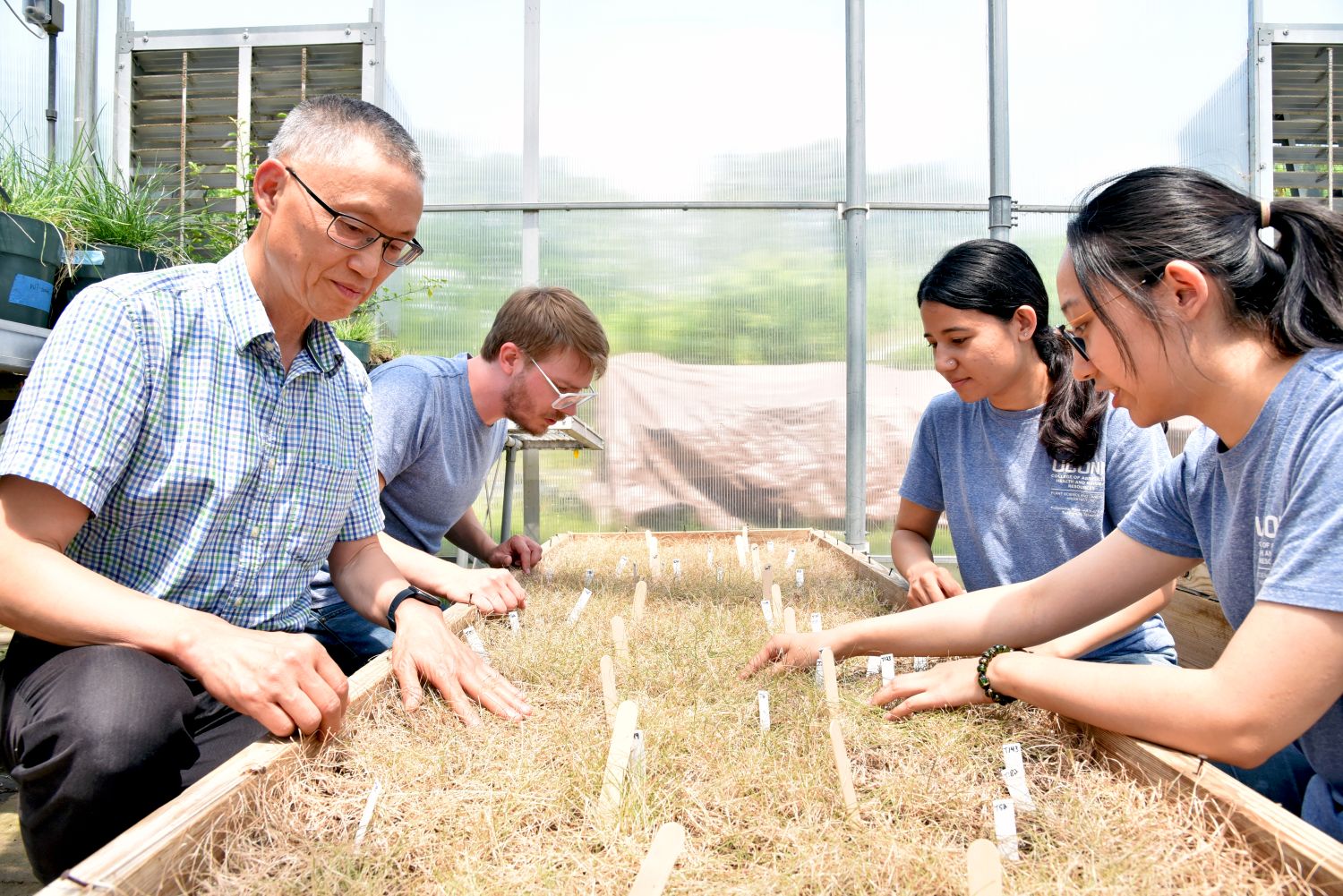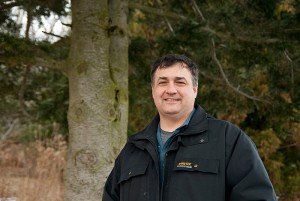
While it’s well known that wind causes trees to sway, it’s less widely recognized that the movement of the trees in turn affects the wind.
Mark Rudnicki, an assistant professor in the Department of Natural Resources and the Environment, is a principal investigator (PI) on a new NSF-funded project to investigate how wind flows through forest canopies.
“This is the first time someone is specifically asking, ‘How does the motion of the canopy itself feed back and affect the wind?’” he says.
The project, which is funded by a three-year, $832,000 ‘collaborative research’ grant from the National Science Foundation, involves both atmospheric studies and forest ecology. “It’s inherently interdisciplinary,” says Rudnicki.
In a previous project, Rudnicki examined the three-dimensional motion of individual tree branches. The current project is on a much larger scale, examining how a forest canopy interacts with the atmosphere, in terms of how the trees sway and the structure of gusts in the atmosphere.
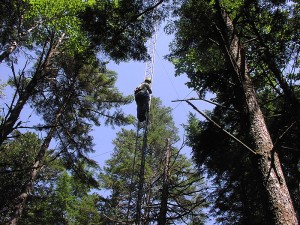
The study combines cutting edge wind flow models (known as ‘large eddy simulation’) and a large field experiment. The models are being developed by PI Hong-Bing Su of East Carolina University, with computers and personnel at the National Center for Atmospheric Research. The field experiment is led by Rudnicki, together with co-PI David Miller of UConn, and PI April Hiscox of Louisiana State University, who holds a Ph.D. from UConn, together with personnel from the University of Maine and the U.S. Forest Service.
Hiscox is the lead person responsible for the collection and analysis of the micrometeorological measurements, though much of the analysis and modeling will be integrated.
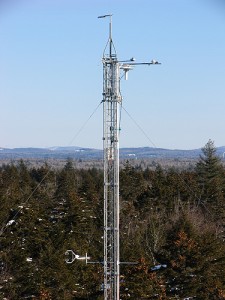
The field experiment, located in the Howland Forest in Maine, involves measuring the motion of trees in a 150-meter diameter plot, and the wind turbulence from two meteorological towers in their midst. The reconstructing of such a large array of trees can enable the researchers to use patterns of tree displacement to visualize and quantify the wind gusts moving through the forest canopy. Measuring the tree sway and wind simultaneously will enable understanding of how tree sway dynamics are related to wind gust statistics.
The tree sway data is gathered from tilt-sensors about half way up each tree. Together with the wind data, it is collected 10 times per second around the clock, and stored in a sophisticated data logging system housed in a specially constructed ‘shack’ in the center of the plot.
Currently only a sample of trees in the stand is equipped with tilt-sensors. Next summer, tilt-sensors will be added to the remaining trees within the site, and monitoring will continue for at least a year, to encompass all the seasons.
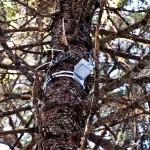
All the equipment needed to launch the project – including cables, lumber, anchors, sledge hammers, and 10-foot sections of tower – had to be carried in by hand a mile from the access road, as the trails were too narrow to accommodate even an ATV. Setting up the experiment in one of the wettest summers on record posed additional challenges: “The mosquitoes were unbelievable,” Rudnicki says.
Rudnicki notes that the atmosphere in and just above the forest canopy is the least understood layer of the earth’s atmosphere, yet it is the site where the exchange of chemicals, particles, and energy from the earth’s surface takes place and is the gateway to exchanging and storing carbon from the atmosphere. He hopes the research will ultimately contribute to a better understanding of the impact of forest clearing on climate and the potential role of forest canopy motion in slowing or adapting to climate change.
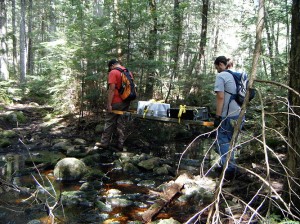
In addition, he says, a better understanding of how trees sway and interact with the lower atmosphere can assist in developing better strategies for managing forests to minimize the vulnerability of trees to catastrophic winds. Currently, the practice of partial forest cutting leaves the unharvested trees more vulnerable to the force of the wind.
Global climate change makes the project more urgent, he says. The risk that trees will blow down is of increasing concern, as global warming is expected to increase the intensity and frequency of catastrophic winds.
There is also going to be a lot of utilization pressure on forests, he adds, both for storing carbon and for their potential as a source of biofuel.


